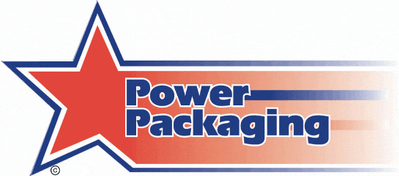Ultimate Bubble Wrap Guide: Different Types, Applications, and Buying Tips
Table of Contents
 |
|
|
Bubble wrap is an essential protective material for a wide range of items, from delicate electronics to large furniture. With various options available, selecting the right type can be challenging. In this guide, we provide clear insights into the different types of bubble wrap, how to choose the best one for your needs, and practical tips for effective usage. |
|
Types of Bubble Wrap: Unveiling the Options
Note: All rolls are available in customized sizes. Different widths, perforations, and even custom printing are available. Just call and pass on your requirements. |
|
 |
Choosing the Right Bubble Wrap: Decoding the PuzzleSelecting the right type hinges on your items and their journey. For fragile goods, opt for thicker wraps with larger bubbles; for lighter items, a thinner variant suffices. Consider the distance your items will travel—long journeys require thicker protection against bumps and shocks. |
Bubble Wrap FAQs: Everything You Need to Know
|
|
 |
Innovations in Bubble WrapRecyclable MaterialsManufacturers are developing bubble wrap made from recyclable materials to reduce waste and environmental impact. Custom Bubble SizesAdvances in manufacturing allow for the creation of bubble wrap with custom-sized bubbles tailored to specific packaging needs. |
Environmental ImpactRecycling Bubble WrapMany recycling programs accept bubble wrap, allowing it to be processed and reused. In New South Wales, recycling bubble wrap requires taking it to specialized collection points, as it cannot be recycled through standard kerbside bins. Most local councils and major supermarkets offer soft plastic recycling programs where bubble wrap can be deposited. Curby Program: This is an innovative initiative where residents of the Central Coast Council area can recycle soft plastics directly from their homes using the Council's kerbside yellow bin. Participants need to register for the program and use the Curby app to track their recycling efforts. Eco-Friendly AlternativesConsider using biodegradable bubble wrap or other sustainable packaging materials to reduce your carbon footprint. Our selection includes biodegradable bubble wrap, which decomposes naturally over time, and recycled bubble wrap made from post-consumer materials, reducing waste. These products maintain the cushioning properties necessary for safe shipping and handling while appealing to environmentally conscious consumers. By choosing these sustainable alternatives, businesses can enhance their packaging practices and contribute to a greener planet. |
|
 |
Cost ConsiderationsBulk PurchasingBuying bubble wrap in bulk can significantly reduce costs, especially for businesses with high packaging demands. Supplier ComparisonCompare prices from different suppliers to find the most cost-effective option for your needs. |
Bubble Wrap Insulation for Windows: A Sustainable Solution |
|
|
Bubble wrap insulation is a versatile and effective solution for reducing heat loss through windows, offering both energy efficiency and cost savings. Whether you're looking to insulate greenhouse structures or home windows, bubble wrap serves as an excellent barrier against conductive heat loss. |
|
Why Use Bubble Wrap for Window Insulation?Bubble wrap insulation works by trapping static air within its bubbles, creating a thermal barrier that reduces heat transfer. This makes it ideal for window insulation, where heat loss through glass is a common issue. Using bubble wrap on windows can help maintain indoor temperatures, reducing reliance on heating systems and lowering energy bills. |
|
Benefits of Bubble Wrap Window Insulation:
|
|
How to Use Bubble Wrap on Windows:To insulate your windows with bubble wrap, simply cut the wrap to the size of your window pane, mist the window with water, and press the bubble wrap onto the glass. The water will help the wrap adhere to the window without additional adhesives. For best results, ensure the bubble side is facing the window to maximize the insulating effect. |
 |
Flexi-Grow: The Advanced Bubble Wrap for GreenhousesOur Flexi-Grow Greenhouse Covers take bubble wrap insulation to the next level with a triple laminated flexible film that contains cells of trapped static air. With a tested R-Value of 0.1 m².k/w, it provides a robust barrier against conductive heat loss, equivalent to two layers of traditional air-inflated covers. Designed for longevity and customized fit, Flexi-Grow is ideal for both residential and commercial greenhouse applications. |
 |
Environmental CommitmentOur bubble wrap products, including Flexi-Grow, are manufactured under stringent environmental standards, ensuring a reduced carbon footprint. They are 100% recyclable and developed with sustainability at the forefront, aligning with our commitment to eco-friendly practices. By choosing bubble wrap insulation, you’re not only enhancing the energy efficiency of your space but also contributing to a more sustainable future. Explore our range of bubble wrap insulation options and see the difference in your energy savings and comfort. |
|
